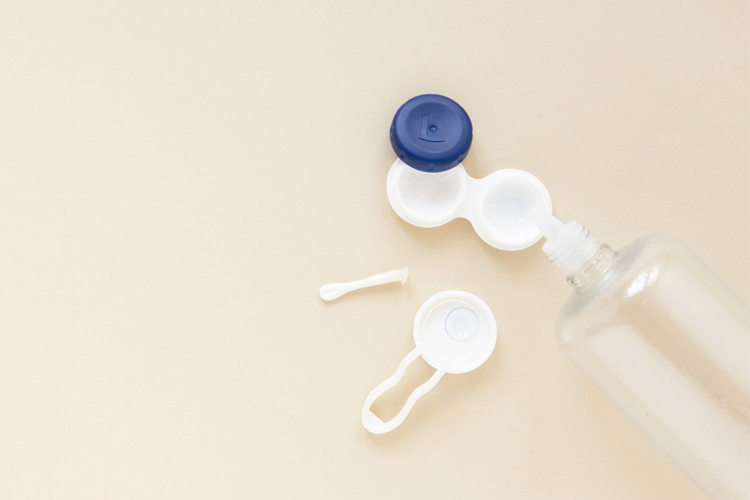Dealing with dry eyes can be particularly challenging for contact lens users, as the lenses interact with the tear film covering the eye's surface, potentially causing increased tear evaporation, friction, and decreased tear production. However, with proper contact lens care, individuals can effectively manage dry eye symptoms while continuing to wear contact lenses.
Choosing the Right Contact Lenses
One of the main factors in managing dry eyes with contact lenses is selecting the appropriate type of lenses. The water content of contact lenses is a critical parameter. High water content lenses can exacerbate dryness over time because they require more tear absorption to maintain hydration levels. For individuals with low tear production, such as those with dry eye syndrome, or for people who spend extended periods in front of computers, lenses with high water content can lead to drier eyes. Therefore, it is essential to choose contact lenses based on your specific eye conditions and wear patterns. If you need to wear contact lenses all day, especially for more than eight hours, it is recommended to choose lenses with low water content to help reduce eye fatigue and dryness.
Maintaining Proper Lens Hygiene
Maintaining good lens hygiene is essential to prevent dry eyes and eye infections. Although many people soak or rub their contacts daily, they may still feel their lenses are not clean enough. Protein deposits on contacts are challenging to remove, even with intensive rubbing. These deposits can create a rough surface, leading to irritation and discomfort.
A professional contact lens cleaner can help to deep clean your contacts daily. The FDA-approved ReO2 contact lens cleaner can remove up to 94.7% of protein deposits, eliminate 99.999% of bacteria, and restore 94% of oxygen permeability. This restoration is crucial as it allows your eyes to "breathe" more freely. Oxygen transmission is vital for maintaining corneal health, preventing conditions like corneal swelling, redness, and even potential infections.
Practicing Good Eye Health
Practicing good eye health includes taking regular breaks when using computers and digital screens to reduce eye strain. Excessive screen use can lead to dry and uncomfortable eyes. Research has shown that we don't blink as often when focused on digital screens, leaving our eyes more exposed to open air and causing our tear film to evaporate much faster. Therefore, make intentional efforts to reduce your screen time and digital eye strain. The more you strain and try to hyperfocus on a screen, the more likely you are to have problems with your blinking patterns.
Home Treatments for Dry Eyes
Home treatments for dry eyes can be quite effective. Applying warm compresses to your eyes can stimulate tear production by promoting the activity of the meibomian glands, which produce the oily layer of tears.
Staying well-hydrated by drinking plenty of water supports overall hydration, which in turn improves tear production. Dehydration can reduce the volume of tears, making the eyes feel dry and uncomfortable. Additionally, managing environmental factors, such as using a humidifier at home, can help maintain optimal humidity levels and provide relief from dry eye symptoms. Dry indoor air can exacerbate dry eye symptoms, especially in winter or in air-conditioned environments.
Conclusion
Managing dry eyes while wearing contact lenses involves a holistic approach that includes selecting the right lenses, maintaining proper hygiene, adopting healthy screen habits, and utilizing home treatments. Incorporating the ReO2 contact lens cleaner into your routine can significantly enhance the cleanliness and comfort of your lenses. By ensuring that your lenses are free from protein deposits and bacteria, you can maintain higher oxygen permeability, which is crucial for corneal health.
By following these steps and integrating ReO2 into your eye care regimen, you can significantly reduce the discomfort associated with dry eyes and enjoy clearer, more comfortable vision with your contact lenses. Remember, your eye health is crucial, so always choose products and practices that prioritize comfort and safety.


